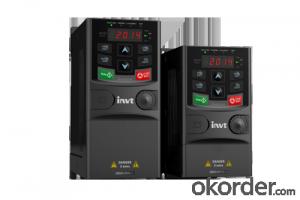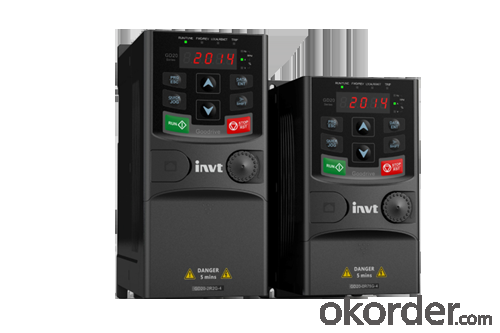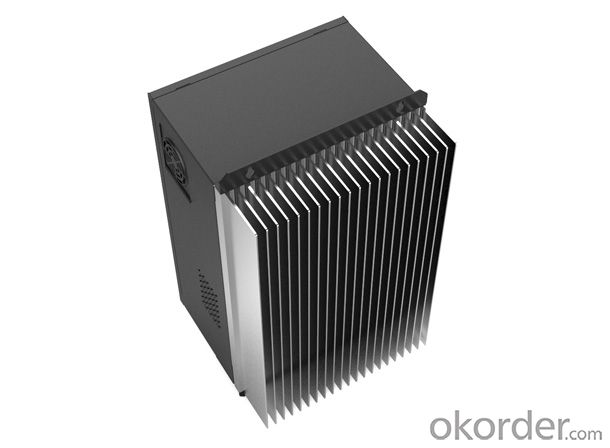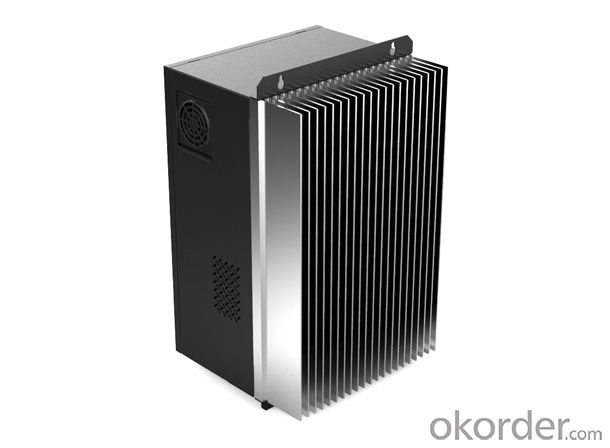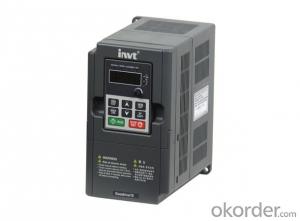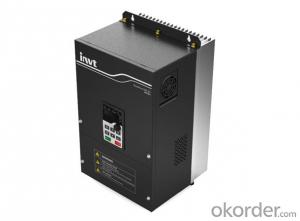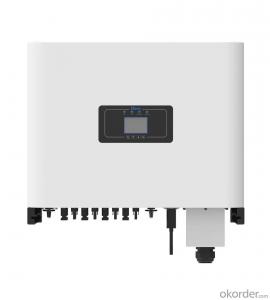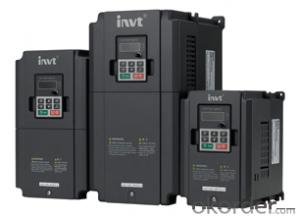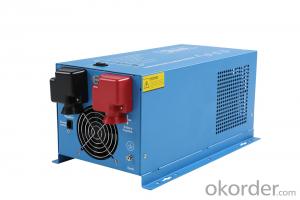Goodrive20 High Performance Mini Vector Solar Inverter for Ebay
- Loading Port:
- China main port
- Payment Terms:
- TT OR LC
- Min Order Qty:
- 10 pc
- Supply Capability:
- 10000 pc/month
OKorder Service Pledge
OKorder Financial Service
You Might Also Like
Goodrive20 High Performance Mini Vector Inverter
Specification
As a kind of mini general vector inverters, Goodrive20 series inverters adopt international advanced vector control algorithm and possess excellent functions; compatible with wall and rail installation, smaller and space-saving, Goodrive20 series inverters are high performance mini products for small power market.
FuturesNew structure design
1. Mini design, smaller installation space;
2. Compatible with rail and wall installation, flexible installation manner;
3. Available multi-inverter in parallel installation, more effective space-saving.
Easy maintenance
1. External keypad;
The standard membrane keypad supports external LED keypad and facilitates on-site applications; support external LED keypad with parameter copying, the two-keypad operating functions are convenient for commissioning control;
2. Swapple cooling fan, easy maintenance.
Reliable QA
1. The product design strictly follows IEC international standards and passes the CE test;
2. Advanced thermal technology makes exact thermal design.
Excellent performance
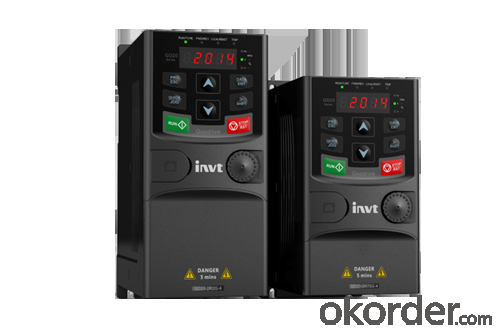
FAQ
Q 1. What’s the payment term?
A. We accept TT,30% deposit and 70% balance against copy of BL
Q 2. How’s the delivery time?
A. usually it will take about 25 days for production
Q 3. Tell me the standard of package?
A. For the small capacity, it use carton, but for big capacity, we will use strong wooden case for protection.
- Q: Can a solar inverter be used with solar-powered greenhouse systems?
- Yes, a solar inverter can be used with solar-powered greenhouse systems. A solar inverter is an essential component that converts the direct current (DC) generated by solar panels into alternating current (AC), which is required to power electrical devices in the greenhouse. By connecting the solar panels to the solar inverter, the greenhouse systems can effectively utilize the solar energy for various applications such as lighting, heating, and ventilation.
- Q: Can a solar inverter be used with a solar-powered greenhouse system?
- Yes, a solar inverter can be used with a solar-powered greenhouse system. A solar inverter converts the direct current (DC) produced by solar panels into alternating current (AC) that can be used to power electrical devices. In a solar-powered greenhouse system, solar panels generate electricity from the sun's energy, which is then converted by the inverter to power the various components of the greenhouse, such as fans, lights, and irrigation systems.
- Q: What is the role of a galvanic isolation transformer in a solar inverter?
- The role of a galvanic isolation transformer in a solar inverter is to provide electrical isolation between the input (solar panels) and the output (power grid). This isolation helps in preventing any electrical noise, surges, or ground loops from affecting the solar inverter or the power grid, ensuring safe and reliable operation. Additionally, the galvanic isolation transformer helps in maintaining the required level of insulation and protection, complying with safety standards and regulations.
- Q: Can a solar inverter be used with batteries?
- Yes, a solar inverter can be used with batteries. In fact, many solar energy systems incorporate batteries to store excess energy generated by the solar panels. The solar inverter converts the direct current (DC) from the solar panels into alternating current (AC) that can be used to power household appliances and charge the batteries. When solar energy production is low, the batteries can be used to provide a continuous power supply.
- Q: How does a solar inverter handle harmonic distortion?
- A solar inverter handles harmonic distortion by incorporating filters and control algorithms that help mitigate and minimize harmonics in the system. These filters are designed to reduce harmonic current injection into the grid, ensuring compliance with power quality standards. Additionally, advanced control algorithms continuously monitor the inverter's output waveform and adjust its operation to reduce harmonic distortion and maintain clean power generation from the solar panels.
- Q: What happens to excess solar energy generated by the inverter?
- Excess solar energy generated by the inverter can either be stored in batteries for later use or fed back into the grid, depending on the setup.
- Q: How does a solar inverter protect against lightning strikes?
- A solar inverter typically has built-in protective measures, such as surge protection devices and grounding systems, that help safeguard against lightning strikes. These protective measures divert the high voltage surge caused by lightning away from the inverter, ensuring its safety and preventing damage to the solar power system.
- Q: What is the maximum output power of a solar inverter?
- The maximum output power of a solar inverter varies depending on the specific model and its capacity. However, typical residential solar inverters have a maximum output power ranging from 1 kilowatt (kW) to 10 kW, while commercial and utility-scale solar inverters can have maximum output powers exceeding several megawatts (MW).
- Q: What are the advantages of using a solar inverter?
- There are several advantages of using a solar inverter. Firstly, a solar inverter converts the direct current (DC) generated by solar panels into alternating current (AC) that can be used to power household appliances and electrical devices. This allows for the efficient utilization of solar energy, reducing reliance on traditional fossil fuel-based electricity sources. Secondly, solar inverters enable the integration of solar power systems with the electrical grid. By synchronizing the generated electricity with the grid, excess power can be fed back into the grid, resulting in net metering or feed-in tariff benefits. This not only reduces electricity bills but also contributes to the overall renewable energy mix, promoting sustainability and reducing carbon emissions. Another advantage is the monitoring and control capabilities provided by solar inverters. Many modern inverters offer real-time monitoring of energy production, allowing users to track the performance of their solar panels and identify any potential issues. Additionally, inverters often come with built-in safety features, such as ground fault protection, to ensure the safe operation of the solar power system. Overall, the advantages of using a solar inverter include efficient conversion of solar energy into usable electricity, integration with the electrical grid, cost savings, environmental benefits, and enhanced monitoring and safety features.
- Q: Can a solar inverter be connected to a home automation system?
- Yes, a solar inverter can be connected to a home automation system. By integrating the solar inverter with the home automation system, homeowners can monitor and control their solar power production, track energy usage, and automate various energy-saving functions such as adjusting thermostat settings, turning off appliances, or scheduling energy-intensive tasks during peak solar production hours. This integration enhances the overall efficiency and convenience of managing solar energy within a smart home environment.
Send your message to us
Goodrive20 High Performance Mini Vector Solar Inverter for Ebay
- Loading Port:
- China main port
- Payment Terms:
- TT OR LC
- Min Order Qty:
- 10 pc
- Supply Capability:
- 10000 pc/month
OKorder Service Pledge
OKorder Financial Service
Similar products
Hot products
Hot Searches
Related keywords
